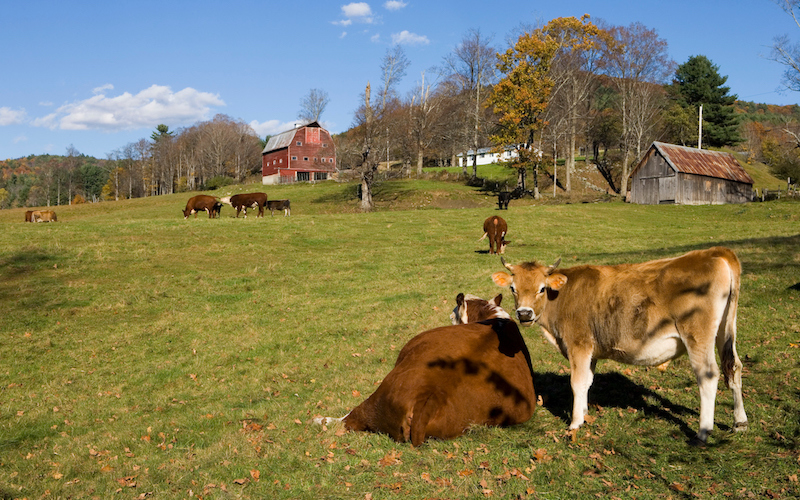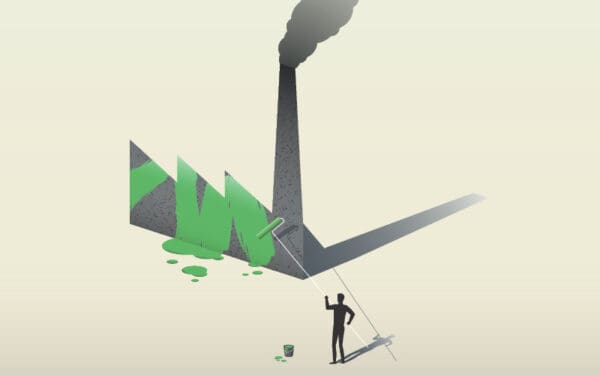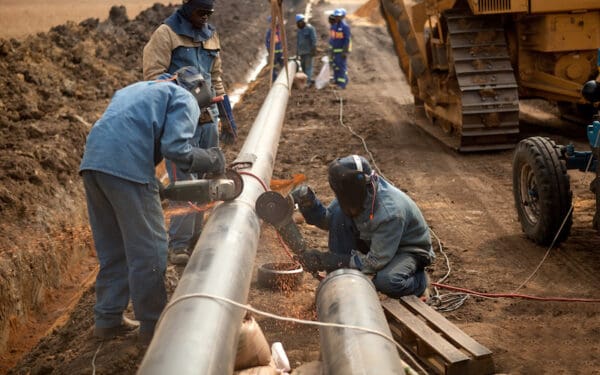
"Renewable Natural Gas" is not a large scale climate solution. Photo: EcoPhotography
For well over a century, fracked gas has been polluting our air and water. In New England, we pay high winter electricity prices due to our reliance on this dirty fossil fuel, and we’ve experienced firsthand the devastation that can result from using it.
Big Gas is more interested in their profits than our safety. That’s why they’re using the coronavirus outbreak to ask for handouts from the government. And that’s why they’ve started calling for investments in two new products that they’re calling “renewable natural gas” and power-to-gas. Their goal: To sell more dirty gas while pretending these new products can help solve our climate crisis.
But don’t let the nice names fool you. “Renewable natural gas”” is not renewable or natural. It’s largely manufactured, and an extremely limited resource that will do little or nothing at all to cut climate-damaging emissions. Both of these products also cost consumers more than actual renewable energy, with none of the environmental benefits.
“Renewable natural gas” is not a large-scale climate solution. And neither is power-to-gas. Instead, they are both shameless attempts by the fossil fuel industry to convince New Englanders to pay for more polluting pipelines.
“Renewable Natural Gas” Will Not Help Us Reach Our Climate Goals
“Renewable natural gas”, also known as biomethane, can be used for all the same things as fracked gas – from heating to cooking to driving. It is made from manure, industrial food waste, landfill gas, and more. It’s a highly processed biogas that contains at least 90% methane, which is a more potent greenhouse gas than carbon dioxide. And one recent report found that as much as 10% of that methane may leak during production.
So, the term “renewable natural gas” is just a cover for what this fuel actually is: methane.
It’s also an extremely limited resource. New England states have some of the lowest potential for “renewable natural gas” production. Nationwide, the prospects are limited, too. According to the National Renewable Energy Laboratory, the U.S. could only replace about 5% of its fracked gas with “renewable natural gas”.
Importing it into our region isn’t an option, either, because it’s not only scarce, but also expensive. Vermont Gas Systems, one of only two providers in New England, sells its “renewable natural gas” for nearly three times as much as plain old fracked gas. The bottom line: The United States just does not have the resources to replace fracked gas with “renewable natural gas”.
Even if there was enough of this supposed “wonder” fuel to go around, the gas industry’s claims that it will solve our climate crisis are both wrong and dangerous.
Biomethane Endangers Public Health
“Renewable natural gas” will hurt our climate more than it helps – but what about other impacts? They’re pretty bad, too, especially when it comes to our health. When “renewable natural gas” burns, for example, it releases nitrous oxide, a compound that creates smog and ozone. Burning it may also produce harmful compounds such as silicon dust and formaldehyde – a known carcinogen.
As is often the case, low-income communities and communities of color will experience the worst impacts of this pollution. These communities are historically and currently more likely to have major highways cutting through them, with cars spewing harmful pollution into homes and businesses. The facilities used to make “renewable natural gas”” release toxic pollution in the process of creating gas. These polluting facilities are often placed in low-income communities and communities of color.
Small farms that could use their excess methane repurposed as “renewable natural gas” as an extra income stream can’t take advantage of the benefits, either, since you’d need at least 500 cows to make the digester profitable. For comparison, 82% of Vermont dairy farms have less than 200 cows.
To top it off, studies have shown that gas appliances – like gas stoves and ovens – cause indoor air quality problems that can increase the risk of respiratory diseases, especially in children. Rather than simply replace one bad gas product with another, we would all be better off if we moved away from gas entirely.
Power-to-Gas Is Just Another Way for Big Gas to Line Their Wallets
Another dirty fuel source touted as clean by the gas industry is power-to-gas. It uses electricity to create methane, which can then be used the same way as fracked gas. This gas has the same negative environmental and public health impacts as “renewable natural gas”, plus some more of its own. A study found that the product of power-to-gas may have higher hydrogen concentrations than traditional gas sources. This has been tied to higher nitrous oxide emissions, creating more smog and ozone and causing serious health and safety risks when used industrially.
Nevertheless, the gas industry argues that it’s a clean energy solution that can be used to store electricity from solar and wind. There may be some small role for this well into the future – when there’s far more excess wind power than we have now – but this process is not an efficient storage solution. And since it does not work with our existing gas infrastructure, it does not make sense to invest in as we look to decarbonize current uses of fracked gas.
Power-to-gas uses a lot of electricity, and only about 54% of the energy remains when the process is complete. Why would we waste electricity creating dirty gas, when it is more energy and cost efficient to invest in and use clean energy directly?
There are Better Ways to Deal with Emissions from Landfills, Food Waste, and Farms
The gas industry and its allies are pushing “renewable natural gas” as a way to channel other sources of emissions into a usable product. This isn’t entirely wrong – there could be small scale, local uses for landfill methane or gas from agriculture – but the technical potential is not there for these sources to be used in place of fracked gas in residential or commercial heating systems. It also misses the bigger picture.
Investing in “renewable natural gas” will not lead to a significant drop in climate-damaging emissions. Instead, it will incentivize companies to create more of the waste that is needed to create this gas.
The solution for these waste products is not to turn them into energy, but to reduce them through zero waste practices. For example, with the industrial-scale composting programs that have already taken root in some states.
The Real Answer to Our Energy Needs Is Solar and Wind
The gas industry is desperate to convince New Englanders to invest in their dirty infrastructure. “Renewable natural gas” and power-to-gas are just their newest attempts. But we know the truth.
Despite Big Gas’s rhetoric, the reality is that electricity made from solar and wind power is cheaper and cleaner than any kind of gas, “renewable” or not. A new report from California showed that electrification – of our heating and cooling systems and of our cars, trucks, and buses – will be a better economic choice for most consumers than gas no matter how many investments in “renewable natural gas” we make. Additionally, the more we electrify, the more expensive “renewable natural gas” will become compared to cheaper, cleaner electricity. It is a waste to invest in this new dirty gas rather than in clean power and electrification.
Using renewable energy and electrifying everything we can – from our heating to our cars to our stovetops – are cheaper, safer options for New England. (In fact, there is no safe or clean way to heat homes and businesses with any form of gas.) It’s time for us to be clear: we see through the fossil fuel industry’s greenwashing, and we choose to invest only in a fast and equitable transition to our clean energy future.



